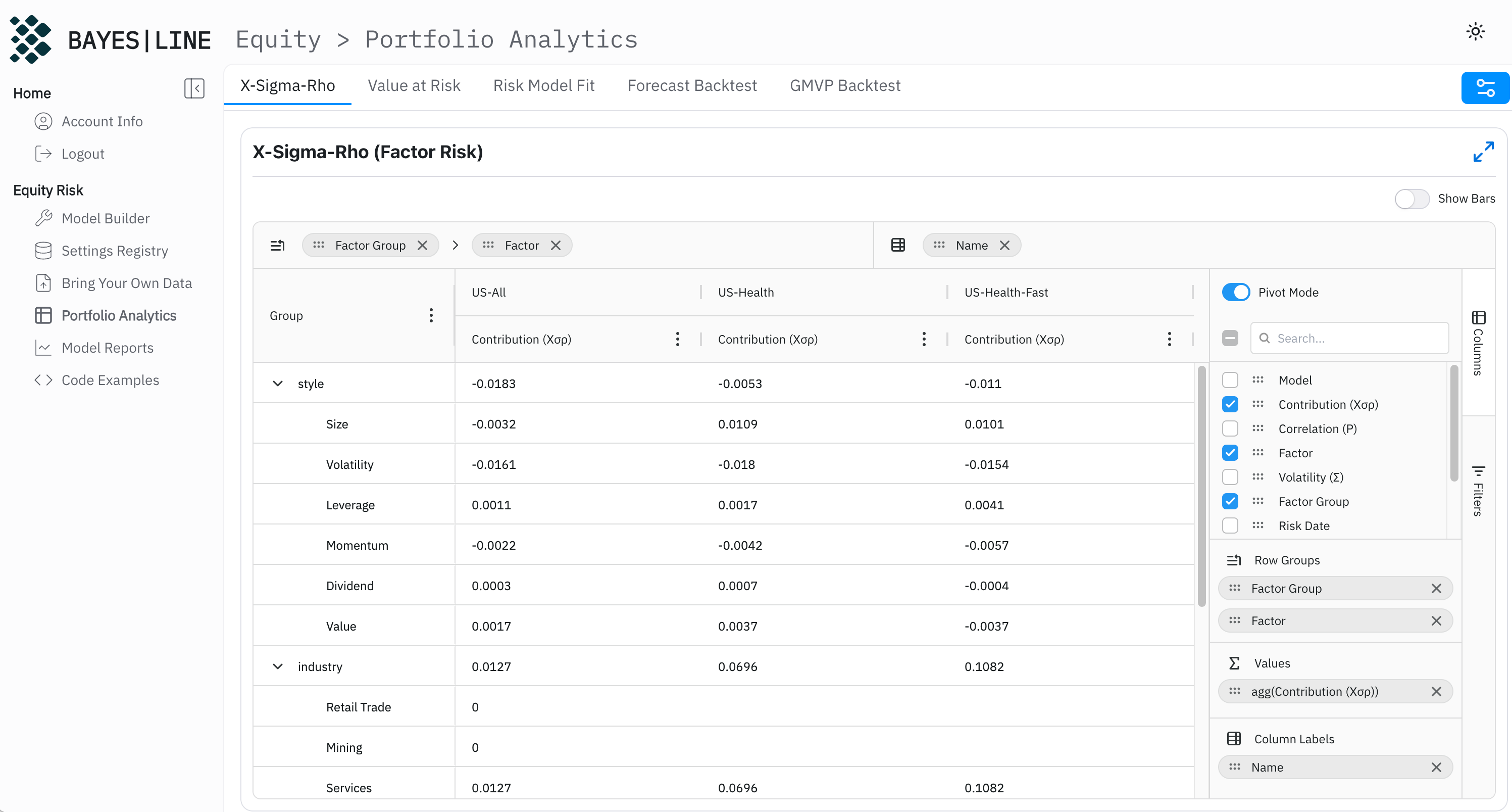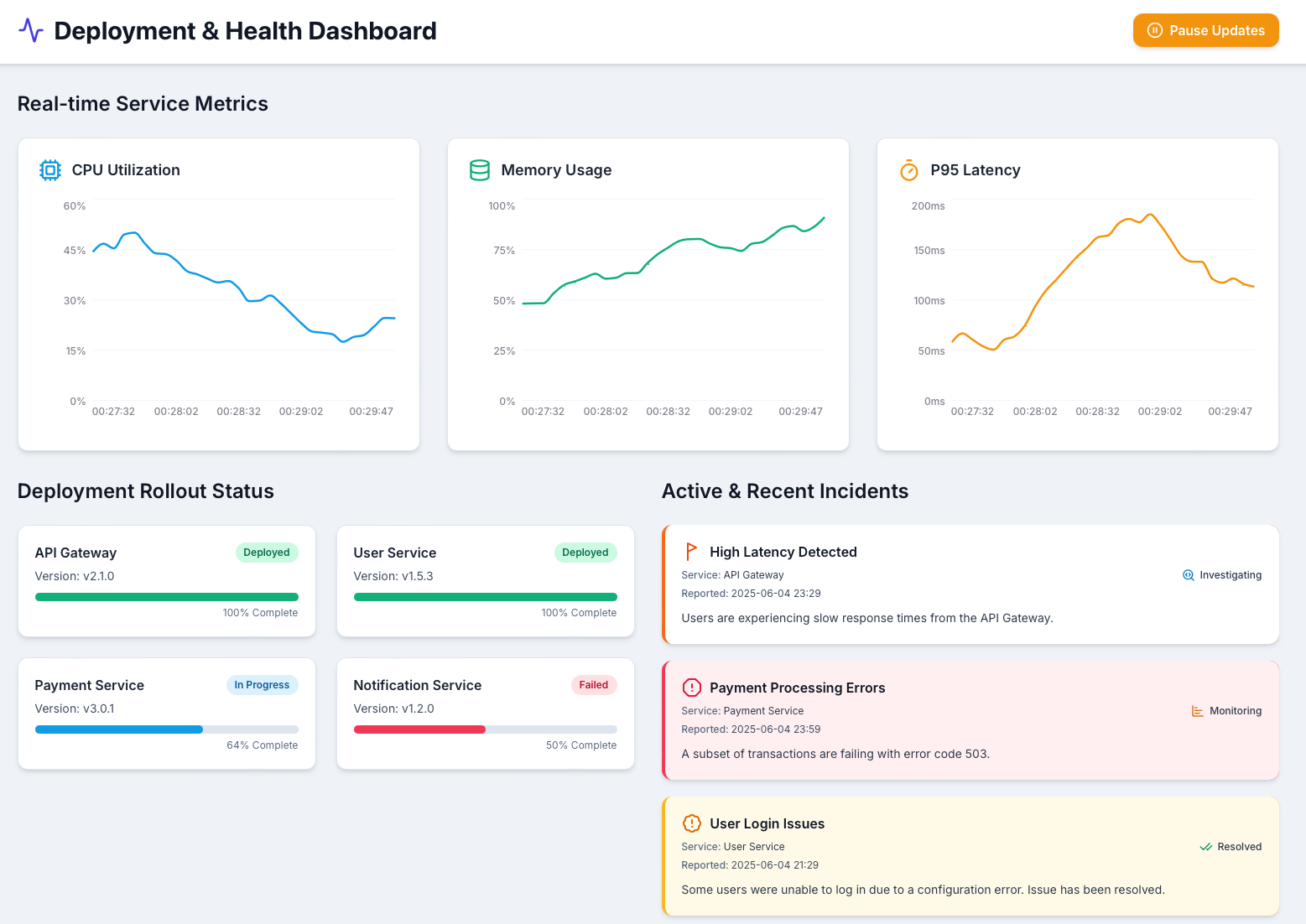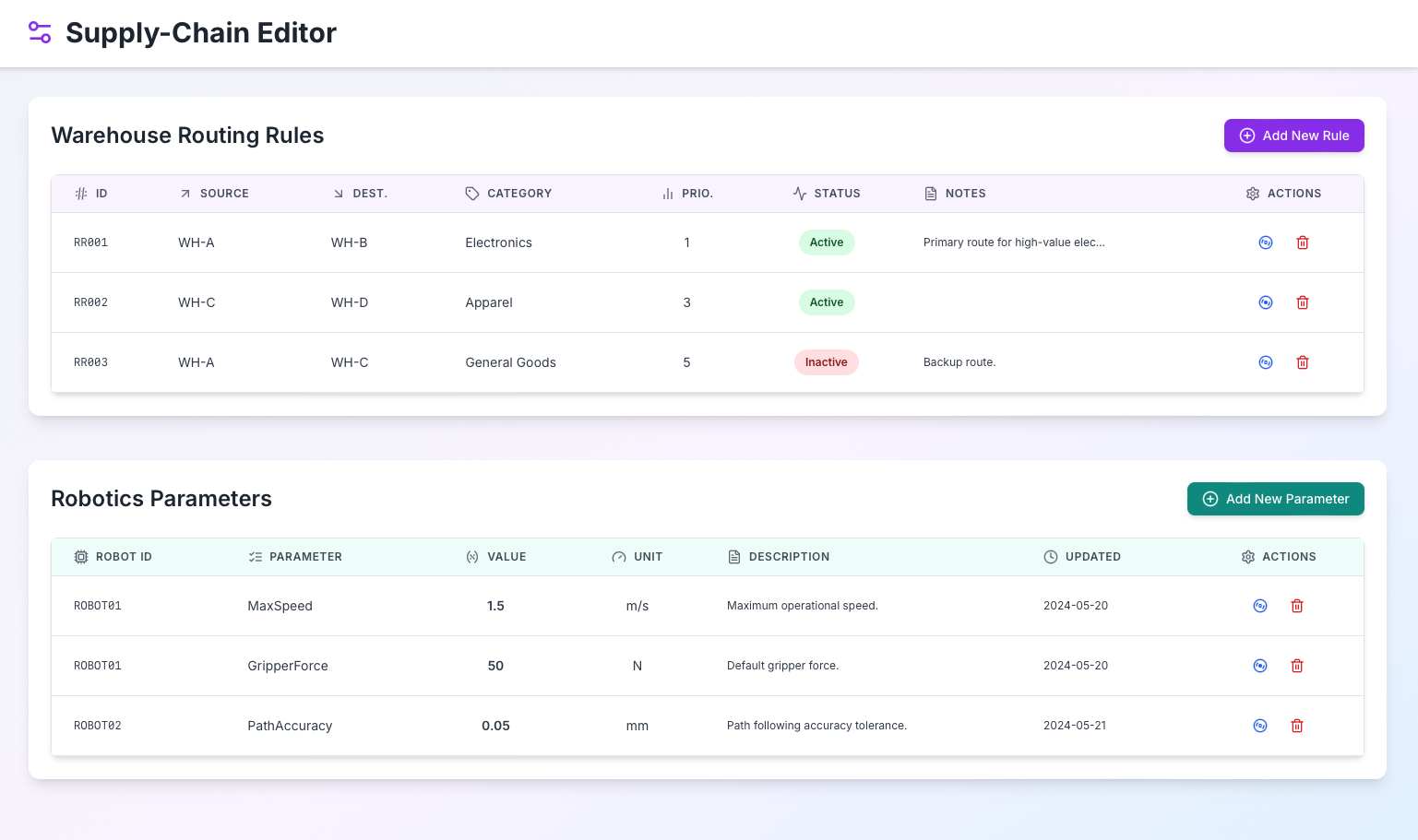Organizations across industries use Reflex to build internal tools, dashboards, and AI-driven applications—all in pure Python. From finance to healthcare, Reflex helps teams move faster by simplifying full-stack development.

From buyside analytics desks to compliance back offices, finance teams choose Reflex because a single Python codebase can stream market data, crunch GPU-heavy models, and satisfy audit trails—without juggling separate front-end frameworks or ETL schedulers. With AG Grid built into the product, analysts iterate and hand a production-grade web app to traders or risk officers the same day.
Examples of apps you can build in Reflex:
- Factor-Risk Analytics Dashboard – GPU-powered analytics dashboard that delivers custom equity-factor risk models in minutes instead of weeks
- End-of-Day Trade Blotter – automatically pulls executions from every venue, flags outliers, and emails a compliance-ready PDF to traders each night.
- Asset-Allocation Simulator – visualizes portfolio mixes and projected returns over time; users drag weight sliders and instantly see downside and drawdown scenarios.
- Treasury & Liquidity Monitor – streams balances, pending settlements, and cash forecasts into a single real-time dashboard with threshold alerts.
- Loan-Underwriting Workflow – scores new credit applications against live KYC/AML data, routes edge cases for manual review, and retrains the model on a weekly schedule.

Modern merchants and growth marketers juggle stock feeds, ad platforms, and customer-service queues that rarely live in the same tool. Reflex lets teams wire those APIs together—from Amazon listings to TikTok ads—then ship production dashboards or scheduled automations with nothing but Python. The result: faster decisions on pricing, spend, and fulfillment, plus fewer hops between spreadsheets and BI tools.
Examples of apps you can stand up in Reflex:
- Inventory & Pricing Command Center – unifies marketplace sales (e.g. Amazon), real-time stock alerts, and supplier lead times in a single view.
- Campaign Control Plane – tracks multi-channel ad spend and ROI, enforces budget caps, and auto-generates performance reports.
- AI-Powered Creative Analyzer – runs frame-level video ad scoring to predict ROAS before campaigns go live.
- Refund & Returns Console – pulls tickets from the help-desk, payment events from Stripe, and warehouse data to approve refunds in seconds.
- Multichannel Attribution Dashboard – blends ad-platform metrics, web analytics, and order revenue to surface true customer-acquisition cost in real time.

Site-reliability, platform, and security teams use Reflex to surface real-time telemetry, automate routine infra tasks, and replace shell scripts with role-based web UIs—all in pure Python.
Examples of apps you can stand up in Reflex:
- Deployment & Health Dashboard – combines service metrics, rollout status, and incident timelines in one screen for on-call engineers.
- VM Lifecycle Manager – grants ops staff a secure web panel to start, stop, snapshot, or tag virtual machines—no CLI access required.
- Factory & Machine-Monitoring Portal – streams sensor data from multiple plants, flags anomalies, and predicts downtime with live charts.
- Supply-Chain Automation Viewer – visualizes robot and conveyor status in distribution centres; integrates with third-party control APIs for fast triage.
- Security-Ops Command Center – unifies BigQuery logs, ticket data, cloud storage, Firestore, Salesforce CRM records, and PagerDuty alerts so analysts can hunt threats and track user activity in a single interface.

Database admins can spin up Python-native panels that let teams read, write, and update their data through polished tables, forms, and charts. With Reflex, full-featured database dashboards and CRUD apps come together in minutes—no separate front-end stack, no raw CLI sessions.
Examples of CRUD-first apps you can stand up in Reflex:
- Role-Based Postgres Admin Panel – browse, edit, or bulk-import customer rows while keeping finance-only fields hidden behind granular permissions.
- Inventory Catalog Manager – one screen to adjust stock levels, pricing rules, and supplier SKUs that sync instantly to every sales channel.
- Content & Data-Exchange Portal – upload new CAD drawings, attach metadata, and version files for manufacturing projects, all stored in a single database.
- Team Management Console – create, disable, or time-limit user accounts and access tokens for internal SaaS tooling, complete with audit logs.
- Supply-Chain Config Editor – operations staff tweak warehouse routing rules and robotics parameters through validated forms that write directly to production tables.
Data scientists and analysts can convert their notebooks into production-grade apps that expose models, metrics, and datasets through live tables, charts, and custom Python components.
Examples of analytics apps you can stand up in Reflex:
- ML-Service Admin Console – register experiment runs, visualize attention maps or confusion matrices, and promote the best model to production with one click.
- Behavioural Cohort Explorer – drag-and-drop filters to segment users by events, demographics, and funnels, then export cohorts or schedule recurring reports.
- Fleet Metrics Self-Serve Dashboard – slice and visualize vehicle telemetry (mileage, battery health, utilisation) so operations teams answer questions in seconds—no SQL required.
- Delivery Operations Dashboard – monitors driver efficiency and delivery performance in real time, highlighting bottlenecks and automatically flagging late orders.
- Dataset Versioning & Quality Monitor – upload new snapshots, run validation tests, and graph distribution shifts or missing-value spikes over time.
When files, forms, recordings, and chat threads produce more raw information than teams can manually review, Reflex converts that unstructured content into structured, actionable insight. OCR, speech-to-text, and large-language-model pipelines plug directly into Python UIs, then push validated results to dashboards, search endpoints, or downstream APIs—no additional middleware or bespoke glue code.
Examples of AI-driven document apps you can stand up in Reflex:
- Training-Session Hub – records live video classes, transcribes speech in real time, and lets coaches search by keyword to jump to any moment.
- Smart Document Viewer – highlights key fields (prices, SKUs, dates) as users scroll and writes the extracted values to a structured database with one click.
- Image-to-GPS Calibration Tool – accepts bulk image uploads, matches them to GNSS logs, and visualizes camera extrinsics for quick QA.
- Enterprise Knowledge Chat – an LLM interface that answers staff questions using contracts, wikis, and ticket history—kept secure behind SSO.
- Support & Deal-Flow Console – shows live agent SLAs while a background workflow ingests tens of thousands of new company profiles each month; vector search and natural-language filters surface the best leads in seconds.